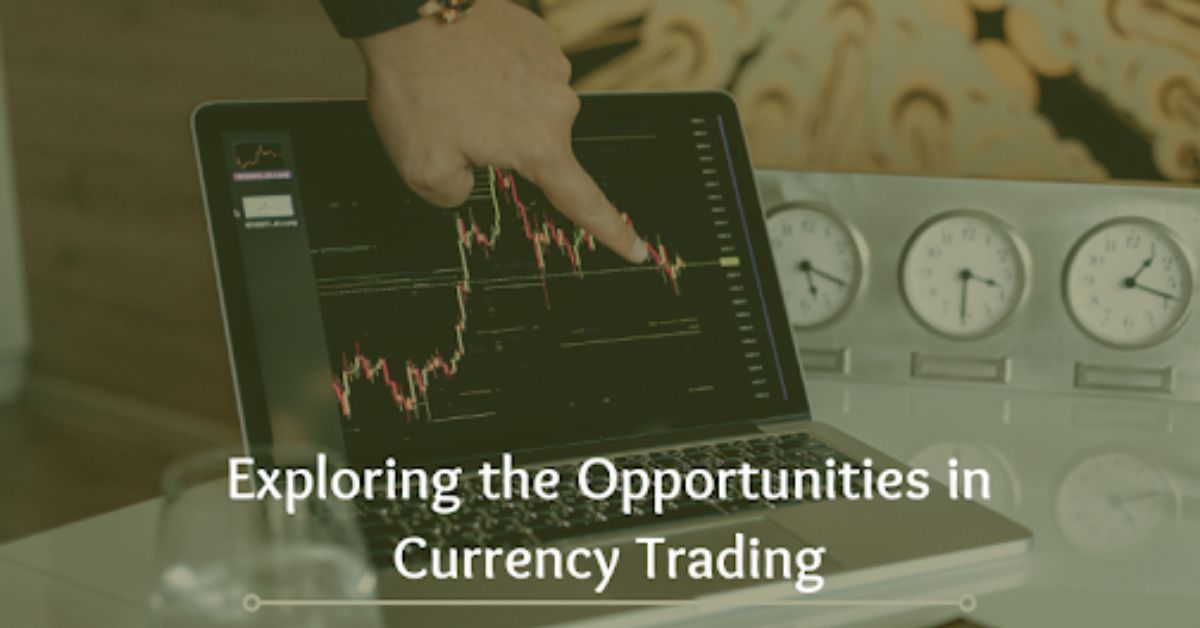The foreign exchange market (Forex, FX) is the largest financial market in the world by trading volume. This global decentralized market connects the financial centers of Europe, Asia, and America. Market participants include institutional players – banks, investment funds, corporations, and central banks – and retail traders operating through online brokers.
Thanks to technological progress and the spread of electronic trading platforms, access to currency trading has become more open to private investors. The foreign exchange market offers opportunities for all types of participants, from speculative profits on exchange rate fluctuations to hedging currency risks and portfolio diversification.
In this post, we’ll look at the fundamentals of foreign exchange trading, provide a step-by-step tutorial for novices, and show real examples of emerging opportunities.
Key Aspects of Currency Trading
Market scale and liquidity
The main feature of the Forex market is its scale and liquidity. The daily turnover of $7.5 trillion indicates the enormous depth of the market. High liquidity means that traders can quickly execute transactions of almost any amount, and spreads (the difference between the purchase and sale prices) remain minimal even with large volumes. For comparison, the daily turnover on the foreign exchange market significantly exceeds the turnover of any other financial market, making currency trading attractive to both large players and private traders.
Trading instruments are varied: in addition to direct currency trading (spot), derivatives account for a significant share of turnover. Thus, according to the Bank for International Settlements (BIS), currency swaps account for about 51% of global turnover, while spot transactions account for about 28%. This means that in addition to buying/selling currency at the current rate, the market is saturated with currency exchange transactions for a period of time (swaps) and other derivatives. The dominant currency is the US dollar – it is involved in 88% of all currency transactions, due to which the main dollar pairs (EUR/USD, USD/JPY, GBP/USD, etc.) have the greatest liquidity.
Factors influencing exchange rates.
The key drivers of the currency market are economic and political factors. The monetary policy of central banks plays a decisive role: changes in interest rates directly affect the attractiveness of the national currency for investors. For example, in 2024, the difference in approaches between the US Federal Reserve and the European Central Bank led to significant fluctuations in the euro-dollar exchange rate. The tight policy of the Fed (high rates) with a softer policy of the ECB caused the dollar to strengthen against the euro, creating opportunities for traders to make money on the difference in rates.
In general, expectations regarding interest rates, inflation and employment data, and economic growth rates – all these indicators are included by the market in the exchange rate of currencies. Geopolitical events are no less important: trade wars, sanctions, elections, and conflicts can cause a surge in volatility in currency pairs.
Technology and market access.
Modern currency trading has changed under the influence of technology. The development of electronic platforms and algorithmic trading in recent years has expanded the opportunities for market participants. Institutional investors increasingly use automated systems and high-frequency algorithms to execute large volumes with minimal costs. At the same time, digital trading platforms (MetaTrader, cTrader, TradingView, etc.) have democratized access to Forex, allowing individual traders to trade side by side with large players. Technologies have given retail traders broader access to the foreign exchange market through Forex CFDs – contracts for difference. These instruments let traders speculate on exchange rate movements without owning the underlying asset.
Today, retail traders have access to technical analysis tools, news feeds, and fast market access almost on par with professionals. High competition among brokers leads to improved trading conditions: tight spreads, high order execution speed, leverage, and small minimum deposits. However, while leverage is an appealing way to generate profits with little money, it also brings additional hazards. For example, a contract for difference (Forex CFD) allows you to open a position on a currency pair by contributing only a fraction of its nominal value, thereby increasing potential profits and losses. CFDs are simply derivative contracts in which traders speculate on the price movement of an underlying asset without delivering the actual currency.
How to Start Trading Forex: A Step-by-Step Guide
For new traders, it is vital to take a structured approach to learning Forex. Below are the basic steps to help you get started in currency trading:
Learn the basics of the market. First of all, you need to understand how the currency market functions. Learn the key concepts: what a currency pair is, the principles of rate formation, influencing factors (interest rates, economics, news), and other terms – spread, margin, lot, swap, etc. A beginner should familiarize himself with the types of trading instruments (spot, futures, options, CFD) and understand how they differ. It is also useful to understand the risks of currency trading, particularly the leverage effect and volatility.
Choosing a reliable broker. The next step is to choose a licensed broker with a good reputation that provides access to Forex. Make sure the broker is regulated by reputable organizations (for example, CySEC, FCA, ASIC) and offers a convenient trading platform and acceptable commission conditions. Pay attention to the possibility of opening a demo account – this is a sign of the broker’s focus on educating clients.
Opening a demo account and learning to practice. Before risking real money, it is a good idea to practice on a demo account. Most brokers have demo accounts, which allow you to trade virtual funds in genuine market conditions. Use this to practice basic operations: opening and closing positions, placing Stop-Loss and Take-Profit orders and analyzing charts. Demo trading will help you understand the platform’s capabilities and hone your skills in executing transactions without financial risk.
Develop a trading strategy and plan. Successful trading is impossible without a clear plan. Define your trading strategy: will you rely on fundamental analysis (news, economic indicators) or technical analysis (graphical patterns, indicators), and what timeframes to work on (scalping, day trading, or long-term positions)?
Write down the rules for capital management: what percentage of the deposit to risk in one transaction (usually no more than 1-2%), where to set stop losses, and what is the expected profit potential per transaction? The plan should also take into account the trading schedule – what sessions (Asian, European, American) you will be active in, based on the available time and volatility of pairs. A clear plan will protect you from impulsive decisions.
Transition to real trading. After enough experience and preparation, you can switch to a real account. Begin with a small sum of capital that you are willing to risk. Even a limited amount (say, $100-$500) is enough to sense the emotional difference between virtual and actual trading. Maintain discipline: follow your plan, do not sharply increase volumes after successful trades, and do not try to recoup losses immediately. Analyze the results – keep a trade journal, note mistakes and successful techniques. Gradually, as you gain experience and confidence, capital and positions can be increased. Remember that training does not end: successful traders constantly monitor the news, improve their strategy, and learn new things.
Following these steps will allow a newbie trader to progress and enter the forex market. The essential suggestions for beginners are to take your time, firstly, invest time in studying, then money in trading, and always manage risks.
Conclusion
The foreign exchange market continues to attract new participants, offering extensive opportunities for both private traders and institutional investors. As technology develops and new instruments appear, Forex trading becomes even more convenient and efficient.
Experts note that the industry will continue to grow, adapting to changing economic conditions and regulations. For traders, this means the need to constantly improve their knowledge and be flexible in their strategies. Foreign exchange trading can become a source of profit and a tool for managing financial risks if approached responsibly. By studying key aspects, choosing the right tactics, and maintaining discipline, market participants can make the most of the opportunities opening up on Forex.











